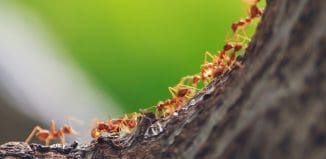DARPA Selects Robotics Challenge Winners
This post is also available in:  עברית (Hebrew)
עברית (Hebrew)
 Eight teams have been selected out of 16 challengers in the Defense Advanced Research Projects Agency (DARPA) Robotics Challenge Trials. DARPA, which conducts advanced research for the Department of Defense, judged the teams on their robots’ ability to perform a number of disaster response skills.
Eight teams have been selected out of 16 challengers in the Defense Advanced Research Projects Agency (DARPA) Robotics Challenge Trials. DARPA, which conducts advanced research for the Department of Defense, judged the teams on their robots’ ability to perform a number of disaster response skills.
The winning teams will each receive up to $1 million to continue their work and to prepare for the robotics challenge finals, to be held sometime in the next 12-18 months. In the finals, the eight top teams, the other eight participating teams, and new teams will compete for a chance to win $2 million.
“The event exceeded my expectations multiple, multiple times over,” said Gill Pratt, the DARPA program manager for the Robotics Challenge. “The success and reliability of the various hardware and software approaches that the teams demonstrated outside their laboratories was tremendous to see in action and sets an important baseline going forward.”
iHLS – Israel Homeland Security
According to Government Security News DARPA constructed eight tasks at the Homestead Speedway in Homestead, Fl., to simulate what a robot might have to do to enter and work inside a disaster zone while its operator remains safe. The competition consisted of eight main tasks, including operating a vehicle, crossing terrain, climbing a ladder, clearing debris, and opening a door.
The teams that won the most overall points included SCHAFT, from SCHAFT, Inc., of Tokyo; IHMC Robotics, from the Florida Institute for Human & Machine Cognition, of Pensacola, FL; and Tartan Rescue, from Carnegie Mellon University’s National Robotics Engineering Center in Pittsburgh, PA.
Pratt has identified three initial goals for the next competition, he said. These include making the robots more stable so they don’t fall, and if they do fall, making them less likely to break. Another includes having robots work without their tethers by using wireless communications and more efficient, self-contained power systems. He also said he hopes the robots can become more autonomous at completing tasks in unstructured environments.





























